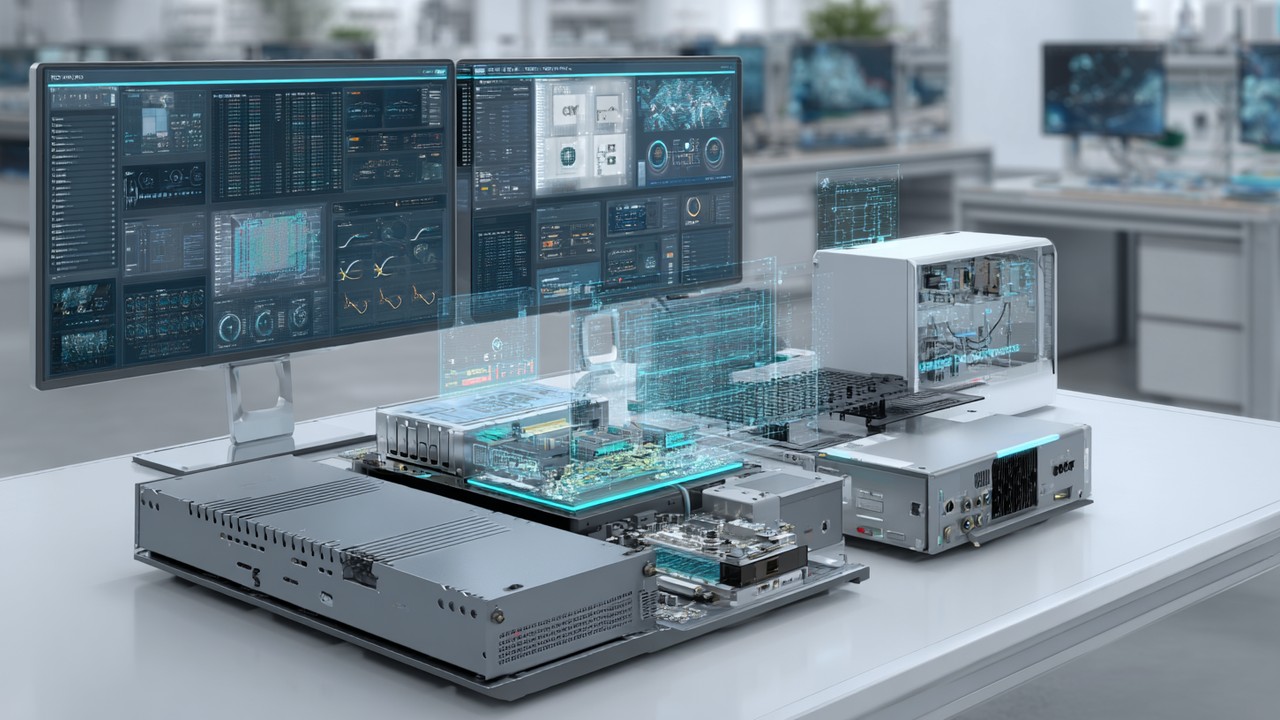Edge AI Processing: Distributed Intelligence for TTFB Enhancement
Edge AI processing is revolutionizing how intelligence is distributed across networks, enabling faster and more efficient data handling at the periphery of computing infrastructures. By shifting AI computation from centralized cloud servers directly to edge devices, this approach significantly reduces latency and optimizes resource utilization. This article explores how distributed intelligence through Edge AI processing plays a pivotal role in enhancing Time to First Byte (TTFB), a critical performance metric that impacts user experience on the web and applications.
Understanding Edge AI Processing and Its Role in Distributed Intelligence
Edge AI processing refers to the execution of artificial intelligence algorithms and models locally on edge devices such as smartphones, IoT sensors, gateways, and embedded systems, rather than relying solely on centralized cloud data centers. This localized approach allows AI workloads to be processed near the data source, minimizing the need for extensive data transmission over networks. The result is improved responsiveness, privacy, and bandwidth efficiency.

Distributed intelligence complements this by decentralizing AI workloads across multiple edge nodes or devices, creating a collaborative network of AI-powered systems. Instead of funneling all requests and computations back to a central server, distributed intelligence enables many devices to perform inference and decision-making independently or in coordination. This architecture is especially relevant in modern computing environments where the proliferation of IoT devices, 5G connectivity, and smart gadgets demands real-time processing with minimal delays.
In the context of edge computing, AI at the edge becomes a catalyst for transforming how data is processed, stored, and analyzed. Devices equipped with AI capabilities can interpret sensor inputs, recognize patterns, and make autonomous decisions without waiting for cloud responses. This shift not only enhances operational efficiency but also addresses challenges such as network congestion and privacy concerns by limiting data exposure to external servers.
A key web performance metric directly influenced by this technological evolution is Time to First Byte (TTFB). TTFB measures the elapsed time between a user's request and the moment the first byte of data is received from the server. It reflects both network latency and server responsiveness, making it a vital indicator of user experience quality. High TTFB values often lead to slower page loads and degraded application performance, which can result in user dissatisfaction and increased bounce rates.
By adopting Edge AI processing and distributed intelligence, organizations can significantly reduce latency and improve server response times, leading to TTFB enhancement. Processing AI workloads closer to the end-user reduces the distance data must travel, alleviates the load on centralized servers, and accelerates content delivery. This synergy between edge computing and AI-driven distributed intelligence is crucial in meeting the demands of today's fast-paced digital landscape.
In summary, Edge AI processing combined with distributed intelligence represents a paradigm shift in computing architecture that addresses latency reduction and optimizes performance. It enables smarter, faster, and more scalable systems that enhance TTFB and overall user experience across IoT networks, 5G infrastructures, and smart device ecosystems. This foundation sets the stage for exploring the enabling technologies, practical benefits, challenges, and future trends that define this innovative field.
Key Technologies Enabling Edge AI for Distributed Intelligence
The practical realization of Edge AI processing and distributed intelligence hinges on a robust ecosystem of hardware and software technologies designed for performance, efficiency, and scalability at the network edge.

On the hardware front, specialized edge AI hardware plays an indispensable role. Devices equipped with AI accelerators such as Graphics Processing Units (GPUs), Tensor Processing Units (TPUs), and dedicated edge chips deliver the computational power necessary for real-time AI inference. These components are optimized for low power consumption and high throughput, enabling complex AI models to run efficiently on resource-constrained edge devices. For instance, NVIDIA’s Jetson platform combines GPUs with energy-efficient processors to support advanced AI workloads in autonomous machines and smart cameras.
Supporting this hardware layer are distributed AI frameworks that facilitate seamless deployment and execution of AI models across diverse edge nodes. Frameworks like TensorFlow Lite, OpenVINO, and NVIDIA’s Jetson software stack provide developers with tools to optimize models for edge environments, reducing model size and inference latency. These frameworks enable AI inference at the edge by compiling and adapting models to run natively on edge devices, ensuring faster decision-making without relying on cloud resources.
The advent of 5G and other low-latency networks further empowers distributed intelligence by providing the high-speed, reliable connectivity needed to synchronize AI workloads across multiple edge locations. 5G’s ultra-reliable low-latency communication (URLLC) capabilities reduce network delays, making it feasible to offload parts of AI processing dynamically between edge nodes and centralized servers. This network evolution is critical for applications demanding instantaneous responses, such as augmented reality (AR), autonomous vehicles, and industrial automation.
Containerization and orchestration technologies like Kubernetes adapted for edge computing have become essential for managing distributed AI deployments at scale. These tools allow developers to package AI applications in lightweight containers that can be easily deployed, updated, and managed across heterogeneous edge environments. Kubernetes at the edge offers automated scaling, fault tolerance, and workload balancing which are vital for maintaining consistent AI inference performance and ensuring resilience in distributed intelligence architectures.
Together, these hardware and software innovations form a comprehensive platform for executing AI at the edge, enabling organizations to unlock the full potential of distributed intelligence. By leveraging cutting-edge edge AI hardware, efficient inference frameworks, high-speed connectivity, and scalable orchestration, businesses can deploy intelligent applications closer to users, achieving significant gains in latency reduction and system responsiveness.
This convergence of technologies not only supports real-time analytics and decision-making at the edge but also lays the groundwork for improving critical performance metrics such as Time to First Byte, ultimately enhancing user experience in a wide range of digital services.
How Edge AI Processing Directly Enhances TTFB in Web and Application Performance
The location where AI processing occurs fundamentally influences server response times, which directly impacts TTFB. When AI workloads are processed centrally in the cloud, every request must traverse the network to reach data centers, causing increased latency and potential bottlenecks. This extended data travel time can inflate TTFB, resulting in slower initial responses for web pages and applications.
By contrast, Edge AI processing brings computation closer to the user, drastically reducing the physical and network distance data must travel. This local inference capability reduces the burden on central servers, allowing them to focus on other critical tasks without being overwhelmed by AI workload demands. The outcome is a more efficient system where the server can deliver the first byte of data faster, directly contributing to TTFB improvement.
One practical application of this principle is AI-driven content personalization at the edge. For example, intelligent caching systems integrated with AI models can predict user preferences and pre-load relevant content on edge devices or nearby nodes. This proactive caching minimizes round-trip times for data retrieval, enabling faster delivery of personalized content upon request. Similarly, edge-based AI can dynamically optimize image and video compression or select the best content variant based on network conditions, further enhancing initial byte delivery speed.

Real-world scenarios demonstrate measurable TTFB gains through edge AI adoption. Consider an e-commerce platform deploying AI-powered recommendation engines at edge nodes distributed globally. By processing customer behavior data locally, the platform can generate tailored product suggestions without sending requests to centralized servers, reducing latency and improving page load times. This distributed intelligence approach not only accelerates TTFB but also enhances conversion rates by delivering a smoother, more responsive shopping experience.
In addition to user-facing benefits, edge AI reduces network congestion by minimizing data transmission volumes between clients and cloud servers. This AI-driven latency reduction ensures that networks remain responsive even under heavy load, safeguarding TTFB performance during peak usage periods.
In summary, edge AI for web performance creates a virtuous cycle where localized processing leads to faster server responses, lower latency, and ultimately enhanced Time to First Byte. Distributed intelligence unlocks these benefits by balancing AI workloads intelligently across the edge-cloud continuum, enabling web and application architectures to deliver superior user experiences in an increasingly connected world.
Challenges and Best Practices in Deploying Edge AI for TTFB Optimization
Despite the promising benefits of Edge AI processing and distributed intelligence for enhancing TTFB, deploying these technologies at scale presents several challenges that organizations must address to realize their full potential.

One primary challenge is the inherent limitation of resources on edge devices. Unlike centralized cloud servers, edge nodes often operate with constrained processing power, memory, and energy supply. Running complex AI models locally requires careful optimization to fit within these limitations without compromising accuracy or speed. To overcome this, developers employ lightweight AI models that are specifically designed to reduce computational overhead while maintaining effective inference capabilities. Techniques such as model pruning, quantization, and knowledge distillation help shrink AI models to sizes suitable for edge deployment, ensuring that latency improvements translate into real-world TTFB gains.
Security concerns also pose a significant hurdle in edge AI implementations. Since edge devices are often distributed in less controlled environments, they are more vulnerable to attacks, data breaches, and manipulation. Ensuring secure edge computing requires adopting robust encryption protocols for data transmission and storage, implementing secure boot and trusted execution environments, and applying continuous monitoring for suspicious activities. Additionally, secure communication between edge nodes and the cloud is essential for maintaining data integrity and privacy, especially when sensitive information is involved.
Data synchronization between distributed edge nodes and central servers adds another layer of complexity. Inconsistent or delayed data updates can degrade the quality of AI inference and negatively affect TTFB. Federated learning emerges as an effective strategy to tackle this issue. By enabling edge devices to train AI models locally and share only model updates instead of raw data, federated learning reduces synchronization overhead while preserving data privacy. This approach balances the workload between cloud and edge, ensuring AI models remain accurate and adaptive without excessive network traffic.
Balancing AI workload distribution between cloud and edge is crucial for optimizing TTFB. Not all AI tasks are suited for execution exclusively at the edge; some require heavy computation or access to vast datasets best handled in the cloud. Designing a hybrid architecture that intelligently assigns tasks based on latency requirements, resource availability, and data sensitivity can maximize efficiency. For example, initial inference and quick decision-making might occur at the edge, while periodic model retraining and complex analytics run in the cloud.
To effectively manage and optimize Edge AI deployments, monitoring and analytics tools play a vital role. These tools track TTFB metrics alongside AI processing performance indicators such as inference latency, throughput, and resource utilization at the edge. Continuous monitoring enables proactive identification of bottlenecks, failures, or security incidents, facilitating timely interventions that preserve system responsiveness. Insights from analytics also inform model updates and infrastructure scaling decisions, ensuring sustained TTFB monitoring and improvement.
Implementing these best practices helps organizations navigate the complexities of edge AI challenges while capitalizing on the advantages of distributed intelligence for TTFB optimization. By leveraging lightweight AI models, federated learning, secure transmission protocols, and hybrid cloud-edge architectures, businesses can build resilient, efficient, and secure systems that deliver faster initial byte responses and superior user experiences.
Future Trends in Edge AI and Distributed Intelligence Impacting TTFB and User Experience
The future of Edge AI processing and distributed intelligence promises transformative innovations that will further enhance TTFB and redefine user experience across digital platforms.

One emerging trend is AI model compression, which advances beyond current pruning and quantization techniques to enable ultra-compact models with near cloud-level accuracy. This compression facilitates deployment of sophisticated AI functionalities on even the most constrained edge devices, driving real-time responsiveness and further lowering latency. Closely related is neuromorphic computing, an avant-garde approach that mimics the human brain’s neural architecture to deliver highly efficient, low-power AI processing. Neuromorphic chips operating at the edge are expected to revolutionize inference speed and energy consumption, enabling instantaneous decision-making critical for TTFB-sensitive applications.
The rise of AI-powered Content Delivery Networks (CDNs) represents another significant development. Traditional CDNs cache and serve content geographically closer to users, but AI-powered CDNs leverage edge intelligence to dynamically optimize content delivery based on real-time analytics, user behavior, and network conditions. This proactive approach enables faster initial byte delivery by predicting demand patterns and adapting caching strategies accordingly, resulting in consistently improved TTFB and smoother content consumption.
Looking ahead, the evolution of wireless communication technologies such as 6G will amplify the impact of distributed intelligence on TTFB. With anticipated ultra-low latency, unprecedented bandwidth, and pervasive connectivity, 6G networks will enable seamless coordination of AI workloads across massive numbers of edge devices and cloud resources. This capability will drastically cut down data travel times and support complex real-time edge analytics, pushing TTFB metrics to new lows and enabling applications such as tactile internet, holographic communications, and immersive AR/VR experiences.
Integration of Edge AI with cutting-edge technologies like augmented reality, virtual reality, and autonomous systems will also redefine latency expectations. These applications demand ultra-low latency to function effectively, making distributed intelligence indispensable for processing sensor data, rendering visuals, and executing control commands instantaneously at the edge. The synergy between Edge AI and these innovations will elevate user experiences by delivering highly responsive, context-aware interactions.
Overall, these future trends highlight a trajectory where distributed intelligence and Edge AI become deeply embedded in the digital fabric, continuously driving TTFB improvements and enhancing user satisfaction. Organizations that embrace these advancements will be positioned to deliver next-generation services characterized by speed, reliability, and intelligence at the network edge.
Selecting and Implementing Edge AI Solutions for Optimal TTFB Enhancement in Your Infrastructure
Choosing the right edge AI platforms and devices is critical to achieving targeted TTFB optimization goals. Selection criteria should focus on:
- Computational capabilities that align with the AI model complexity and real-time inference requirements.
- Power efficiency to ensure sustainable operation in resource-constrained or remote edge environments.
- Compatibility with distributed AI frameworks and support for containerized deployment.
- Network connectivity features, including 5G or beyond, to facilitate low-latency communication.
- Security features to protect data and AI workloads.
A step-by-step approach to integrating distributed AI processing typically involves:
- Assessing existing web or application architecture to identify latency bottlenecks and AI processing needs.
- Selecting appropriate edge devices and platforms based on workload characteristics and deployment scale.
- Optimizing AI models for edge inference using compression and adaptation frameworks.
- Deploying AI workloads in containerized environments orchestrated with Kubernetes or similar tools.
- Implementing hybrid workload distribution strategies balancing cloud and edge resources.
- Establishing continuous monitoring for TTFB and AI performance metrics.
- Iterating and scaling deployments based on analytics insights and evolving user demands.
From a cost-benefit perspective, investing in edge AI infrastructure requires balancing upfront hardware and software expenses against the tangible benefits of improved TTFB and user engagement. Faster response times can lead to higher conversion rates, reduced churn, and operational efficiencies that justify initial costs. Organizations should also consider long-term scalability and maintenance expenses when selecting solutions.
Continuous optimization is essential to sustain TTFB gains as traffic patterns and AI workloads evolve. This may involve updating AI models, refining workload distribution algorithms, expanding edge node coverage, and upgrading network infrastructure. Leveraging analytics tools and performance data ensures that these adaptations are data-driven and effective, enabling ongoing improvements in latency and user experience.
